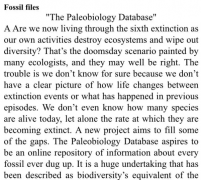2019年5月4日雅思阅读考题回顾
来源:青岛朗阁
浏览:
发布日期:2019-05-05 10:21
摘要:最新一期的雅思考试结束,正在备考的小伙伴们,雅思阅读属于提分关键点,为了让大家更快的适应考试,今天青岛朗阁海外研究中心老师刘玲玲为大家整理了2019年5月4日的 雅思阅读 考题解析,大家快来回顾学习一下吧。 考试日期: 201 9年5月4日 Reading Passage
| 考试日期: | 2019年5月4日 |
| Reading Passage 1 | |
| Title: | 水獭 |
| Question types: |
段落信息配对1-8 问答题9-13 |
| 参考答案 |
段落信息配对答案 1.水獭适应性:A 2.欠发达的能力:B 3.水獭成熟阶段:E 4.水獭社会特征:C 5.保护水獭失败:F 6.水獭如何在冷水中生存:A 7.保护水塔的法律措施:G 8.矛盾观点:F 问答题答案 9.salt water 10.sight 11.swimming speed 12.costal otters 13.moles |
| 相关英文原文阅读 |
A Otters are semiaquatic (or in the case of the sea otter, aquatic) mammals. They are members of the Mustelid family which includes badgers, polecats, martens, weasels, stoats and minks, and have inhabited the earth for the last 30 million years and over the years have undergone subtle changes to the carnivore bodies to exploit the rich aquatic environment. Otters have long thin body and short legs—ideal for pushing dense undergrowth or hunting in tunnels. An adult male may be up to 4 feet long and 30 pounds. Females are smaller, around 16 pounds typically. The Eurasian otter’s nose is about the smallest among the otter species and has a characteristic shape described as a shallow “W”. An otter’s tail (or rudder, or stern) is stout at the base and tapers towards the tip where it flattens. This forms part of the propulsion unit when swimming fast under water. Otter fur consists of two types of hair: stout guard hairs which form a waterproof outer covering, and under-fur which is dense and fine, equivalent to an otter’s thermal underwear. The fur must be kept in good condition by grooming. Sea water reduces the waterproofing and insulating qualities of otter fur when salt water gets in the fur. This is why freshwater pools are important to otters living on the coast:. After swimming, they wash the salts off in the pools and then squirm on the ground to rub dry against vegetation. B Scent is used for hunting on land, for communication and for detecting danger. Otterine sense of smell is likely to be similar in sensitivity to dogs. Otters have small eyes and are probably short-sighted on land. But they do have the ability to modify the shape of the lens in the eye to make it more spherical, and hence overcome the refraction of water. In clear water and good light, otters can hunt fish by sight. The otter’s eyes and nostrils arc placed high on its head so that it can see and breathe even when the rest of the body is submerged. The long whiskers growing around the muzzle are used to detect the presence of fish. They detect regular vibrations caused by the beat of the fish’s tail as it swims away. This allows otters to hunt even in very murky water. Underwater, the otter holds its legs against the body, except for steering, and the hind end of the body is flexed in a series of vertical undulations. River otters have webbing which extends for much of the length of each digit, though not to the very end. Giant otters and sea otters have even more prominent webs, while the Asian short-clawed otter has no webbing—they hunt for shrimps in ditches and paddy fields so they don’t need the swimming speed. Otter ears are protected by valves which close them against water pressure. C A number of constraints and preferences limit suitable habitats for otters. Water is a must and the rivers must be large enough to support a healthy population of fish. Being such shy and wary crea-tures, they will prefer territories where man’s activities do not impinge greatly. Of course, there must also be no other otter already in residence—this has only become significant again recently as populations start to recover. A typical range for a male river otter might be 25km of river, a female’s range less than half this. However, the productivity of the river affects this hugely and one study found male ranges between 12 and 80km. Coastal otters have a much more abundant food supply and ranges for males and females may be just a few kilometers of coastline. Because male ranges are usually larger, a male otter may find his range overlaps with two or three females. Otters will eat anything that they can get hold of—there are records of sparrows and snakes and slugs being gobbled. Apart from fish the most common prey are crayfish, crabs and water birds. Small mammals are occasionally taken, most commonly rabbits but sometimes even moles. D Eurasian otters will breed any time where food is readily available. In places where condition is more severe, Sweden for example where the lakes are frozen for much of winter, cubs are bom in Spring. This ensures that they are well grown before severe weather returns. In the Shetlands, cubs are born in summer when fish is more abundant. Though otters can breed every year, some do not. Again, this depends on food availability. Other factors such as food range and quality of the female may have an effect. Gestation for Eurasian otter is 63 days, with the exception of North American river otter whose embryos may undergo delayed implantation. E Otters normally give birth in more secure dens to avoid disturbances. Nests are lined with bedding (reeds, waterside plants, grass) to keep the cubs warm while mummy is away feeding. Litter Size varies between 1 and 5 (2 or 3 being the most common). For some unknown reason, coastal otters tend to produce smaller litters. At five weeks they open their eyes—a tiny cub of 700g. At seven weeks they’re weaned onto solid food. At ten weeks they leave the nest, blinking into daylight for the first time. After three months they finally meet the water and learn to swim. After eight months they are hunting, though the mother still provides a lot of food herself. Finally, after nine months she can chase them all away with a clear conscience, and relax—until the next fella shows up. F The plight of the British otter was recognised in the early 60s, but it wasn’t until the late 70s that the chief cause was discovered. Pesticides, such as dieldrin and aldrin, were first used in '1955 in agriculture and other industries—these chemicals are very persistent and had already been recognised as the cause of huge declines in the population of peregrine falcons, sparrowhawks and other predators. The pesticides entered the river systems and the food chain—micro-organisms, fish and finally otters, with every step increasing the concentration of the chemicals. From 1962 the chemicals were phased out, but while some species recovered quickly, otter numbers did not—and continued to fall into the 80s. This was probably due mainly to habitat destruction and road deaths. Acting on populations fragmented by the sudden decimation in the 50s and 60s, the loss of just a handful of otters in one area can make an entire population enviable and spell the end. G Otter numbers are recovering all around Britain—populations are growing again in the few areas where they had remained and have expanded from those areas into the rest of the country. This is almost entirely due to law and conservation efforts, slowing down and reversing the destruction of suitable otter habitat and reintroductions from captive breeding programs. Releasing captive-bred otters is seen by many as a last resort. The argument runs that where there is no suitable habitat for them they will not survive after release and when1 there is suitable habitat;, natural populations should be able to expand into the area. However, reintroducing animals into a fragmented and fragile population may add just enough impetus for it to stabilise and expand, rather than die out. This is what the Otter Trust accomplished in Norfolk, where the otter population may have been as low as twenty animals at the beginning of the 1980s. The Otter Trust has now finished its captive breeding program entirely. Great news because it means it is no longer’ needed. |
| 题型难度分析 | 第一篇有8道段落信息配对和5道问答题,段落信息配对数量多难度较大,但问答题相对简单。总体难度中等。 |
| 剑桥雅思推荐原文练习 | 剑6 Test1 Passage1 |
| Reading Passage 2 | |
| Title: | 照片的发展和面临的争议 |
| Question types: |
段落信息配对 填空题 判断题 |
| 参考答案 |
段落信息配对答案 担心摄影影响艺术:B 摄影用到的技能:D 艺术家试图模仿照片:E 摄影对艺术和绘画的影响:G 判断题答案 23.False 24.Not Given 25.False 26.Not Given |
| 题型难度分析 | 题型包括段落信息配对,填空题和判断题。总体来说,这篇文章的难度适中。 |
| 题型技巧分析 |
段落信息配对题做题步骤: 1. 审题看有无复选。 2. 读题画关键词。 3. 去原文中读段落查找题目中的同义替换,读到即选。 注意:可以优先查找关键词比较容易定位的题。 |
| 剑桥雅思推荐原文练习 | 剑7 Test 2 Passage 2 |
| Reading Passage 3 | |
| Title: | 未来 |
| Question types: |
人名观点配对 填空题 多选题 |
| 题型难度分析 | 本篇文章篇幅长,对阅读速度和查找定位的能力要求高,难度大。 |
| 剑桥雅思推荐原文练习 | 剑7 Test 3 Passage3 |
|
考试趋势分析和备考指导: 这次考试难度大,段落信息配对的比例高,对学生同义替换和查找细节的能力要求高且耗时。平时要重视配对题,尤其是段落标题配对和段落信息配对这类乱序且耗时的题型,课下加强练习才能在考试中平稳发挥。 |
|

扫二维码,添加朗阁咨询老师,备注“官网”
免费领取雅思、托福备考计划、精选资料,最新口语新题考点资料
- 上一篇:2019年5月4日雅思口语考题回顾
- 下一篇:2019年5月4日雅思写作A类考题回顾
25
2022-06
-
2020年1月16日雅思听力考试真题
2020年1月16日雅思考试已经结束,正在备考雅思的小伙伴,你们想要知道这次考试的听力部分都...
25
2022-06
-
2020年1月16日雅思阅读考试真题
正在进行雅思备考的小伙伴,你们想知道2020年1月16日雅思考试的考试内容吗?今天为了帮助大家...
25
2022-06
-
2020年1月16日雅思写作考试真题
今天为了帮助正在进行雅思备考的小伙伴更好的准备雅思考试,青岛朗阁雅思写作名师 费晓静...
25
2022-06
-
2020年1月16日雅思口语考试真题
今天青岛朗阁雅思口语名师张开翼为大家整理了2020年1月16日雅思口语考题总结,分析了雅思口...
04
2020-12
-
2020年11月14日朗阁雅思听力考题回顾
今天,要和大家分享的是2020年11月14日朗阁雅思听力考题回顾,希望这篇文章能够对大家的学习...
04
2020-12
-
2020年11月14日朗阁雅思阅读考题回顾
今天,要和大家分享的是2020年11月14日朗阁雅思阅读考题回顾,希望这篇文章能够对大家的学习...
热门课程
大家都在看
阅读(2095)
阅读(1965)
阅读(1942)
阅读(1323)
阅读(1093)
阅读(831)







